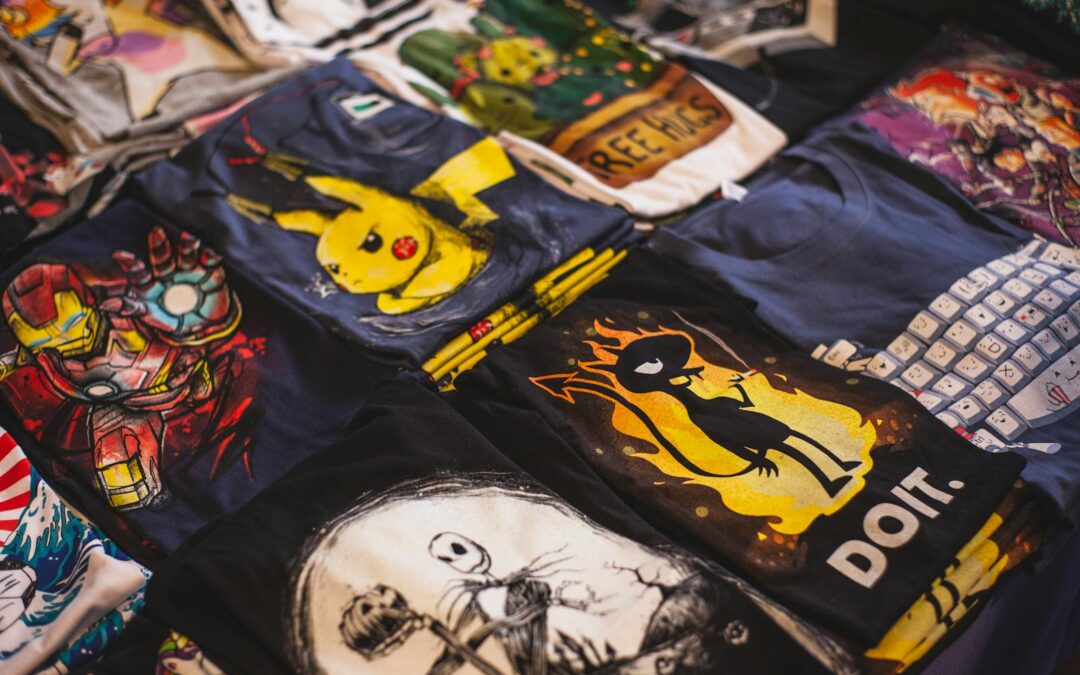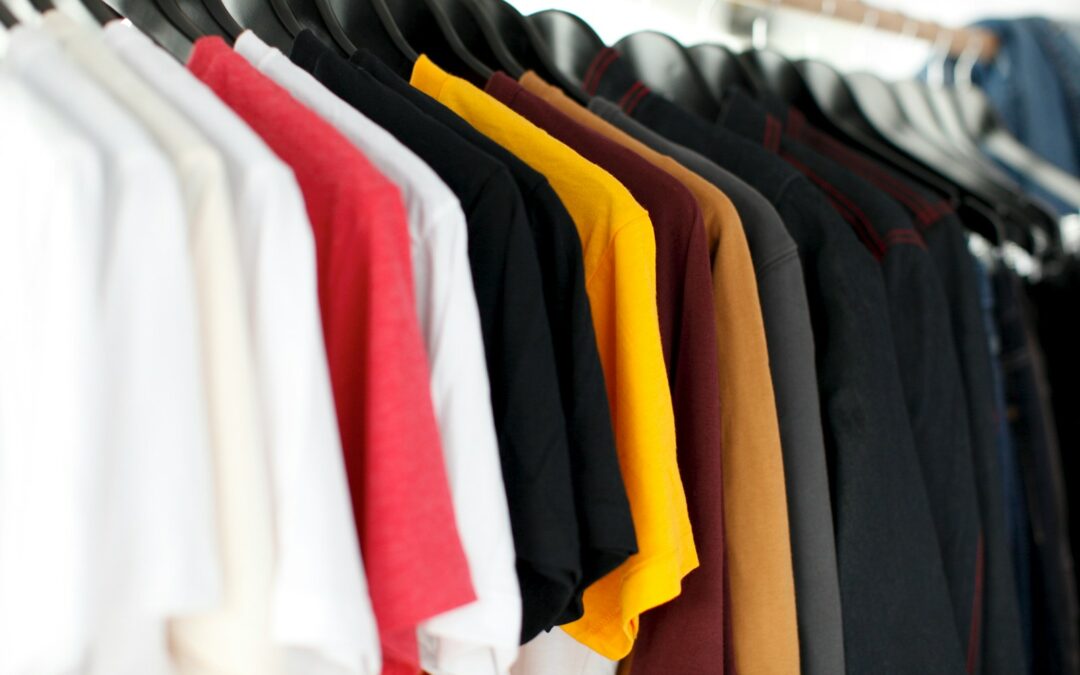Heat resistant tape might not be the first thing you think about when starting a custom apparel business, but it’s an essential tool for ensuring precise, professional results. Whether you’re a custom apparel creator crafting unique designs or a DTF (Direct-to-Film) printing enthusiast experimenting with cutting-edge methods, heat resistant tape is your secret weapon to successful heat transfer projects.
This guide will take you through everything you need to know about heat press tape—from understanding its purpose to choosing the right type and mastering its use. You’ll learn how this simple tool can elevate your projects and ensure every design presses perfectly.

What is Heat Press Tape?
Heat press tape is a specially designed adhesive tape that secures your designs in place during heat transfer processes. Heat tape is an essential tool for securing designs during heat transfer processes, known for its versatility in adhering various materials, including heat-transfer vinyl and iron-on designs, while withstanding high temperatures and leaving no residue after removal. Unlike regular tape, it’s made with heat-resistant materials, such as silicone or Kapton, allowing it to withstand the high temperatures of a heat press without melting or leaving residue.
How It Differs from Regular Tape
Unlike general-purpose tapes, heat press tape is:
- Highly Temperature Resistant (up to 500°F/260°C in most cases)
- Residue-Free, ensuring no sticky marks are left on your substrate
- Tailor-Made for Heat Transfers, adhering to transfer paper, fabric, or vinyl without damaging either
Whether working with transfer paper, heat transfer vinyl (HTV), or other materials, heat press tape is an indispensable tool for clean, professional results on diverse substrates.
Why Use Heat Press Tape?
Heat press tape is not just an accessory; it’s a necessity for precision, safety, and efficiency. Here’s what it brings to the table:
1. Prevents Shifting
Keeping your custom designs in place is crucial. Heat press tape holds your image or transfer perfectly steady to avoid ghosting or misalignment. No more redoing your pressing!
2. Withstands High Temperatures
Regular adhesives melt, deform, or leave behind sticky residues when exposed to high heat. Heat press tape, on the other hand, is specifically designed to tolerate the heat of transfer applications without breaking down.
3. Protects Heat Press Surfaces
By acting as a barrier between your project and the heat press platen, heat press tape prevents adhesive or ink from sticking to your equipment, prolonging its lifespan.
4. Versatile Applications
From tumblers and custom mugs to T-shirts and tote bags, heat press tape works on a variety of materials, making it indispensable for numerous projects involving vinyl, fabric, or sublimation.
5. Clean and Easy Removal
Heat press tape peels off smoothly without leaving sticky residue, saving time during post-processing and ensuring a professional look.

Types of Heat Press Tape
Choosing the right tape depends on your specific projects. Here’s a quick breakdown:
1. Acrylic Tape
- Pros: Strong adhesion, high heat resistance
- Cons: May leave residue on delicate materials
- Best For: Heat transfer vinyl and bulk projects requiring extra sticking power
2. Silicone Tape
- Pros: Clean removal, ideal for smooth substrates
- Cons: Might not stick well to irregular or textured surfaces
- Best For: Sublimation projects or garments with soft surfaces
3. Kapton Tape
- Pros: Extreme heat resistance, excellent for electronics and industrial use, similar to thermal tape which is also highly resistant to high temperatures and suitable for various applications
- Cons: More expensive, unnecessary for typical fabric projects
- Best For: Specialty projects exposed to sustained or extreme heat
How to Choose the Right Heat Press Tape
Selecting the perfect tape for your project ensures seamless results. Here’s what to consider:
- Material Compatibility: Check that the tape adheres properly to your fabrics, HTV, or other materials without causing damage.
- Thermo tape: A durable and functional option for withstanding high temperatures.
- Temperature Requirements: Ensure the tape can withstand the heat of your press; most tapes are rated up to 400-500°F.
- Residue Concerns: Opt for residue-free tape if working on delicate fabrics or surfaces.
- Budget: Balance quality and price—investing in durable, high-performing tape will save you frustration and costs in the long run.

Heat Press Tape vs. Other Adhesives
Heat press tape is a specifically designed adhesive solution for heat transfer applications, offering several advantages over other adhesives. Unlike traditional adhesives, heat press tape is heat-resistant and can withstand high temperatures, making it ideal for use with heat presses and other heat transfer materials. Additionally, heat press tape is designed to be removable without leaving residue, ensuring that your custom designs remain intact.
In comparison to other adhesives, heat press tape is more reliable and efficient for heat transfer applications. It provides a secure hold on heat transfer vinyl, iron-on designs, and other heat transfer materials, preventing shifting and movement during the heat press process. This ensures that your designs are applied evenly and accurately, resulting in high-quality finishes.

Step-by-Step Guide to Using Heat Press Tape
1. Prepare Your Design and Material
Cut and align your design on the fabric or substrate. Use transfer paper or heat transfer vinyl based on your project type.
2. Apply the Tape
Secure the edges of your design with heat press tape, ensuring every part of the design stays in place.
3. Set Up Your Heat Press
Adjust time, temperature, and pressure settings according to your heat transfer material requirements.
4. Press with Confidence
Once everything is aligned and taped, use your heat press to transfer the image.
5. Peel and Inspect
After cooling slightly, gently remove the heat press tape and inspect your results for accuracy.
Tips and Tricks for Perfect Application
- Use Enough Tape: Cover all edges of your design to prevent shifting during pressing.
- Avoid Overlapping Tape: Overlapping tape can disrupt even heat distribution, leading to uneven transfers.
- Test on a Small Area: Before committing to your full design, test the tape on a spare section of fabric to ensure it adheres properly.
- Store Properly: Keep your tape in a cool, dry place to maintain its adhesive properties.
Troubleshooting Common Issues
Shifting Designs
- Solution: Use additional tape to reinforce edges and prevent movement.
Tape Residue
- Solution: Choose residue-free tape, and clean affected areas with a residue remover if needed.
Uneven Transfers
- Solution: Avoid overlapping tape and ensure even pressure during heat application.

Heat Press Tape Storage and Maintenance
To ensure the longevity and effectiveness of your heat press tape, proper storage and maintenance are essential. Here are some tips to help you store and maintain your heat press tape:
- Store the tape in a cool, dry place, away from direct sunlight and heat sources.
- Keep the tape away from dust and debris, which can affect its adhesive properties.
- Avoid exposing the tape to extreme temperatures, as this can compromise its heat-resistant properties.
- Use a clean and dry surface when applying the tape to prevent contamination.
- Regularly inspect the tape for signs of wear and tear, and replace it as needed.
By following these storage and maintenance tips, you can ensure that your heat press tape remains effective and reliable for your heat transfer applications.

Heat Press Tape Safety Precautions
When working with heat press tape, it’s essential to take certain safety precautions to avoid accidents and injuries. Here are some safety precautions to keep in mind:
- Always follow the manufacturer’s instructions for the heat press tape and heat press machine.
- Wear protective gloves and eyewear when handling the tape and heat press machine.
- Ensure the work area is well-ventilated and free from flammable materials.
- Avoid touching the tape’s adhesive side, as it can cause skin irritation.
- Keep the tape away from children and pets, as it can be a choking hazard.
- Dispose of used tape responsibly, following local regulations and guidelines.
By taking these safety precautions, you can minimize the risks associated with working with heat press tape and ensure a safe and successful heat transfer process.
Unlock Endless Potential with Heat Transfer Vinyl
For flawless application of your designs, reliable tools and supplies are a must. That’s where Limitless Transfers comes in! We offer high-quality, hot-peel DTF transfers with vibrant colors and lasting results—perfect for professionals looking to streamline their processes.
Why Choose Limitless Transfers?
- Free Shipping on orders over $50
- No Minimum Orders for complete flexibility
- Fast Turnaround times to meet your demands
- Exceptional Support for creators at any level
Explore our range of heat press supplies, including premium heat press tape, DTF printers, and everything else you need to bring your ideas to life!

Your Next Perfect Transfer Awaits
Heat press tape might seem like a small detail, but as any seasoned custom apparel creator or DTF enthusiast will tell you—it’s a detail that makes a huge difference. From precise design placement to pristine results, the right tape ensures your creativity shines through every project.
Take your crafting game to the next level. Explore the premium tools and resources we offer at Limitless Transfers, and create designs that stand out.




